-
Blowing
inthe Wind
Mexico City’s problems need better answers
Text by Tatiana Bilbao
Photography by Pablo López Luz
Mexico City’s population began exploding exponentially in the 1950s and it now has an estimated greater urban population of some 20 million. Architect Tatiana Bilbao shares her thoughts on the energy and pollution issues that ensued in what became one of the world’s biggest, and dirtiest, cities.
I grew up during Mexico City’s demographic explosion in the sixties and seventies, alongside the increasing insecurity, lack of control, and massively elevated levels of pollution that came with it. Although population growth continues, the further spread of the city is limited, situated as it is in the middle of a large valley surrounded by mountains, so density can only increase along with the concomitant problems involved.
In the nineties the city’s “planners” (and I mark them with quotes here, since planners do not “plan” but respond to the existing, which has been created organically by society), focused their ideas on how to stop or reduce the levels of pollution.Images from Pablo López Luz's ongoing series: “Terrazo”
-
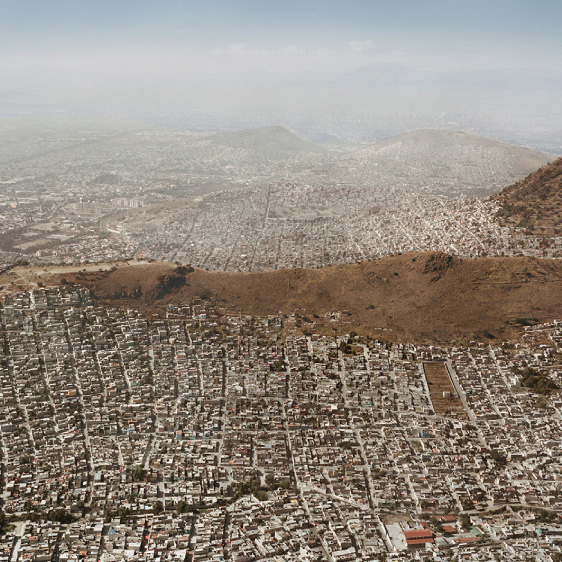
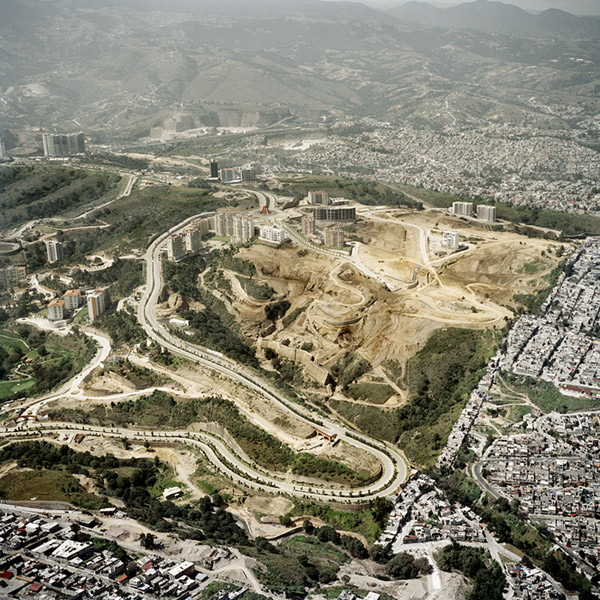
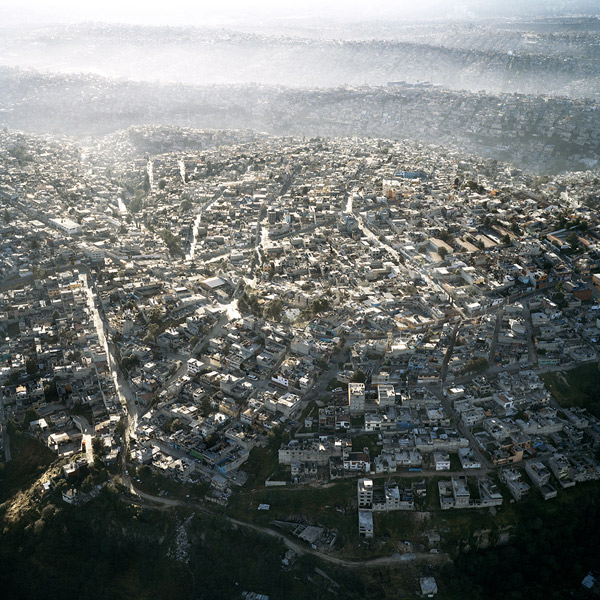
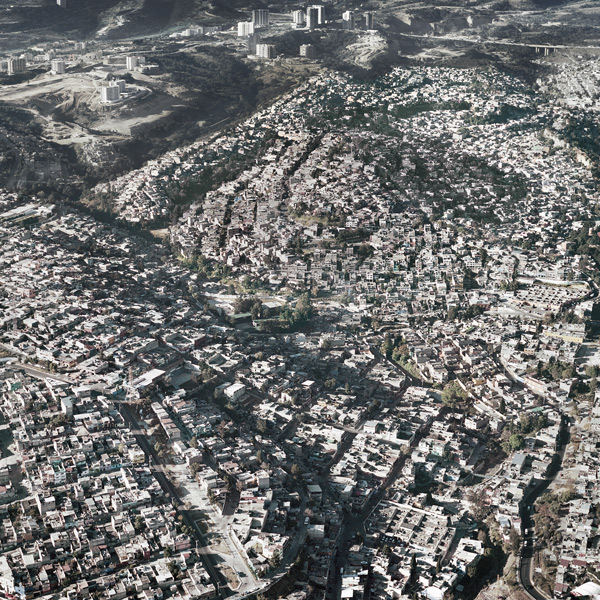
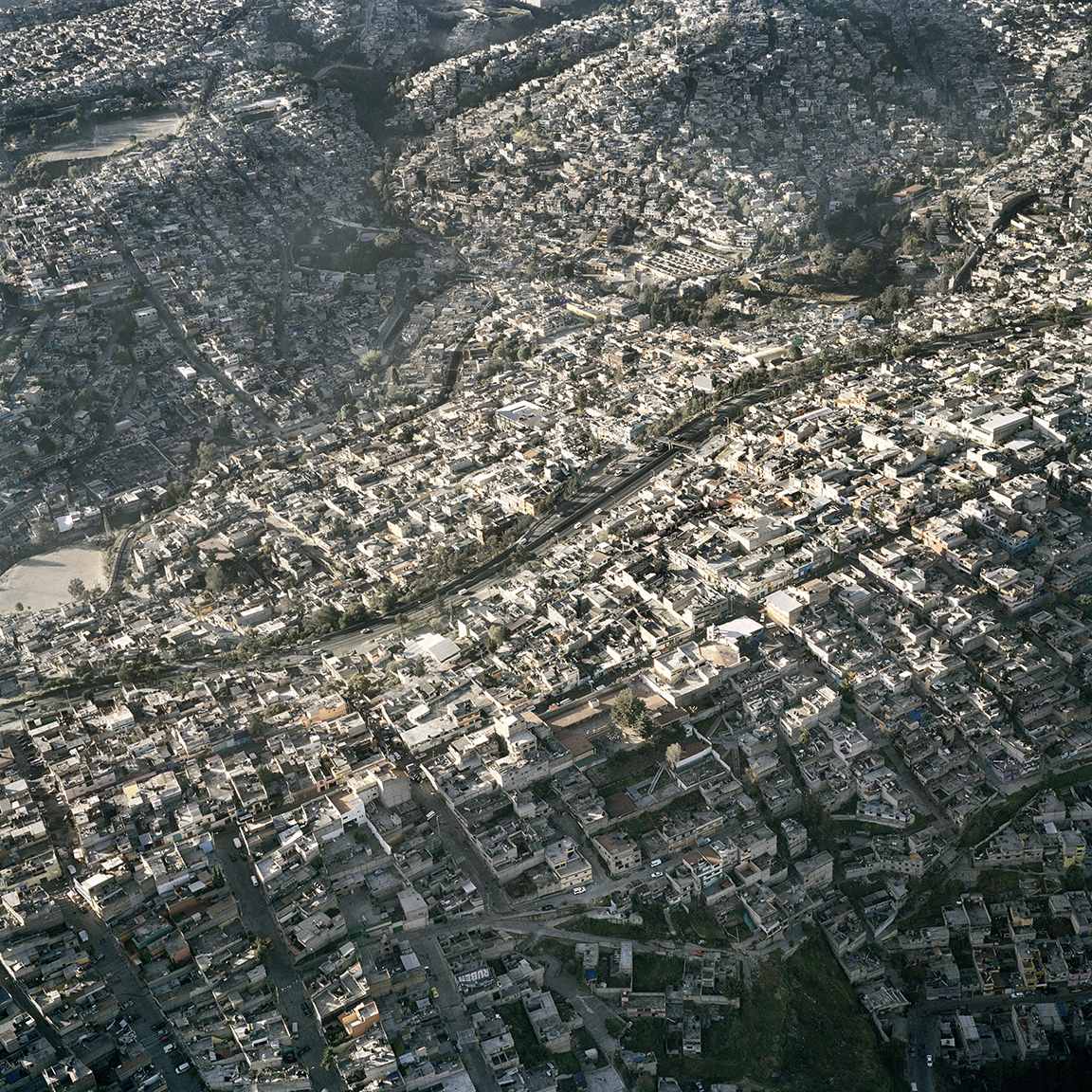
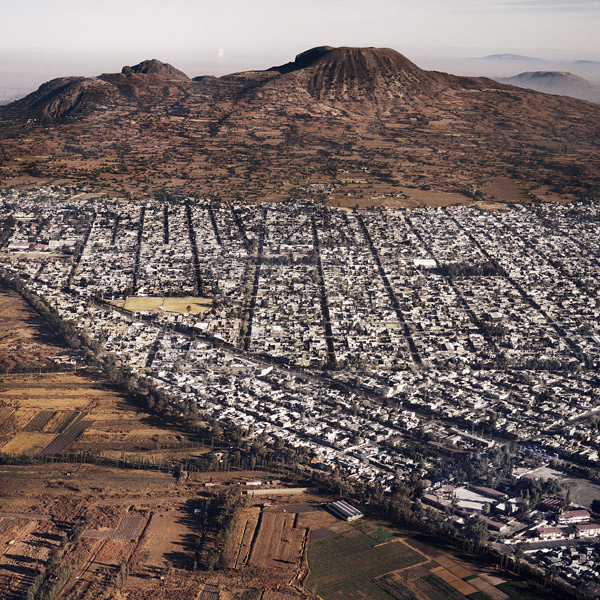
-
Tatiana Bilbao was born in Mexico City in 1972 where she still lives and works today. She studied architecture and urbanism at Universidad Iberoamericana, graduating in 1996, after which she worked as an advisor for urban projects at the Housing and Development Department. In 2004 she opened her own office: Tatiana Bilbao SC, which has since completed projects in China, France, Spain and Mexico. In 2004 she also co-founded the urban research centre MXDF along with architects Derek Dellekamp, Arturo Ortiz Struck and Michel Rojkind.
Pablo López Luz (b. Mexico City, 1979) is a photographer and artist. He completed his MFA at New York University in 2006, and has exhibited in the Museum of Modern Art (San Francisco), Museo de Arte Moderno (Mexico City), Museo de Arte Carrillo Gil (Mexico City), and Centro Fotográfico Alvarez Bravo (Oaxaca, Mexico).
These images are taken from his series Terrazo where he wants to “re-interpret the classical notion of Mexican landscape through a more contemporary view” on the manipulated and constructed landscapes he finds within Mexico’s larger cities as well as on the countryside.
Solutions were as diverse as implementing a programme that involved leaving your car at home one day a week (Hoy no circula) to ambitious urban plans for relocating industry and closing the majority of “dirty” companies within the city centre.
One of the most creative solutions of the time was a proposal by a renowned engineer, Heberto Castillo (1928-1997), best known as a left-wing political activist for workers’ rights following the 1968 student protests and for his invention of Tridilosa, a lightweight structure that combined thin rods of steel with concrete to build very large, but very light, slabs that were used all over the country.
Castillo proposed installing one hundred giant ventilators in the city to simply blow the polluted air away from the valley. His idea was to construct gas burners on the ground to elevate the temperature of the polluted air and then to dig holes through the hills and install huge fourteen-metre-wide ventilators to create the necessary movement of wind to expel the contaminated air. He calculated that when the system was on, the pollution would decrease to levels that where no longer harmful to human beings within sixty hours of operation.
Although the proposal lacked clarity and was more utopian than feasible, it ended up not only being part of the collective discussion, but even became part of the political agenda in the year it was proposed (1992).
Today’s hot issue obsessing the planners is water: the mayor wants to install a wind park to allow the city to produce its own energy for pumping the water it needs from the neighbouring valley. It’s a nice idea, but everyone seems to have forgotten that there simply isn’t enough airflow across Mexico City.
This is a city that has grown organically, and whose wealth of problems is as large as its population, it will take a very big wind to blow all its problems away – and maybe wind is simply not enough. I
-
Search
-
FIND PRODUCTS
PRODUCT GROUP
- Building Materials
- Building Panels
- Building technology
- Façade
- Fittings
- Heating, Cooling, Ventilation
- Interior
- Roof
- Sanitary facilities
MANUFACTURER
- 3A Composites
- Alape
- Armstrong
- Caparol
- Eternit
- FSB
- Gira
- Hagemeister
- JUNG
- Kaldewei
- Lamberts
- Leicht
- Solarlux
- Steininger Designers
- Stiebel Eltron
- Velux
- Warema
- Wilkhahn
-
Follow Us
Tumblr
New and existing Tumblr users can connect with uncube and share our visual diary.
»Where there is nothing, everything is possible. Where there is architecture, nothing (else) is possible.«
Rem Koolhaas
Keyboard Shortcuts
- Supermenu
- Skip Articles
- Turn Pages
- Contents


